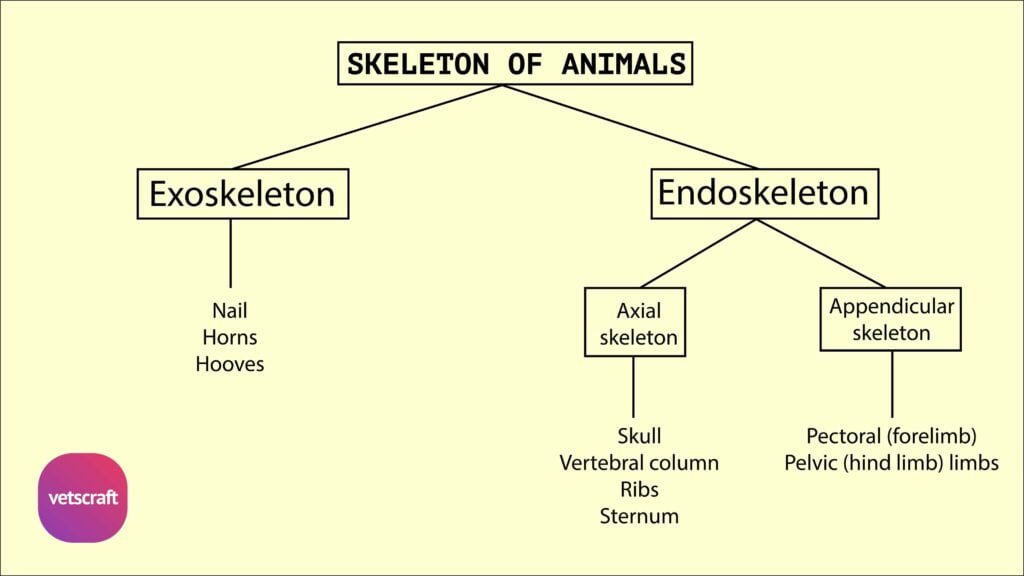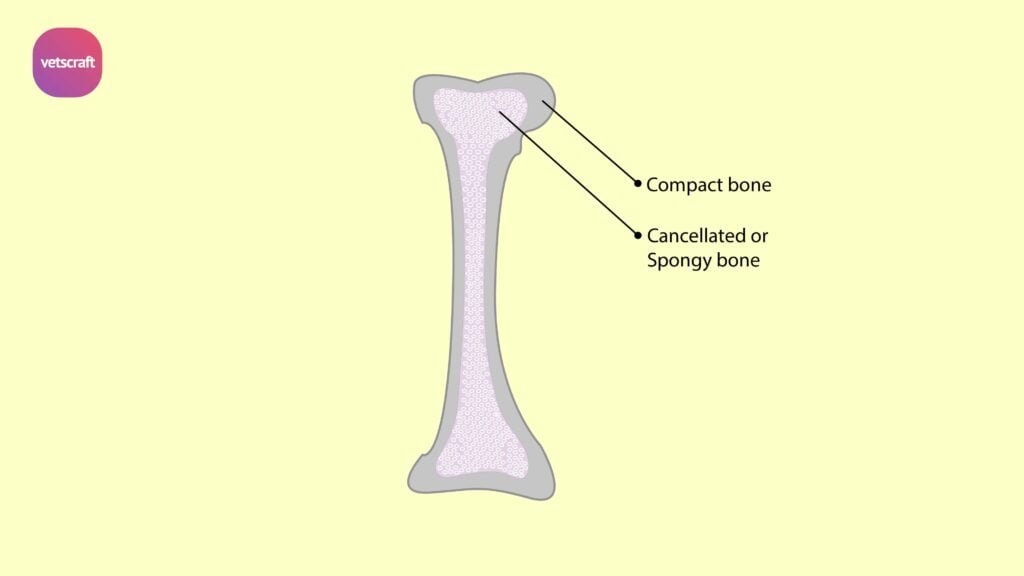TABLE OF CONTENTS
Trachea of Animals
The trachea of animals is a flexible cartilaginous tube extending from the larynx to the hilus of the lungs where it divides into right and left bronchi.
Trachea of Ox
- Trachea of Ox is kept permanently open by a series of about 50 ‘C’ shaped cartilaginous rings embedded in its walls
- It occupies a median position except at is termination where it is pushed a little to the right of the median plane by the aortic arch
- Its average length is about 65 cm, the width about 4 cm and height 5 cm
- It is approximately cylindrical but its cervical part is for the most part compressed from above downwards whereas at its origin it is almost circular
- The trachea has cervical and thoracic parts
- The cervical part is related dorsally to the oesophagus for a short distance and for the rest of its extent to the longus colli muscles
- Laterally it is related to the lateral lobes of the thyroid gland, carotid artery, vagus, sympathetic and recurrent laryngeal nerves, tracheal lymph ducts and cervical lymph glands
- The oesophagus lies on its left from the third cervical vertebra backwards. Ventrally it is related to the ventral cervical muscles
- The sternocephalicus muscle crosses it obliquely, passing from the ventral surface forwards on its sides to reach the angles of the jaw
- The omohyoideus crosses it very obliquely, passing over the lateral surface of the cervical part of the trachea in its upper third
- The sternothyrohyoideus covers the ventral aspect of the trachea. The scalenus lie on either side near the entrance to the thorax
- This arrangement of the muscles leaves a small area of the ventral face of the trachea at its upper third covered only by the skin
- The thoracic part of the trachea passes backward between the two pleural sacs and divides into two bronchi opposite to the 5 th rib
- It is related dorsally to the oesophagus and longus colli muscle. Its left face is related to the aortic arch, left brachial artery and thoracic duct
- Its right face is crossed by the right vagus. Ventrally, the trachea is related to the cranial vena cava, brachio-cephalic trunk, cardiac and recurrent laryngeal nerves
- The trachea in the ox detaches a small apical bronchus to the apical lobe of right lung about the level of the third rib or intercostal space and beyond this it is adherent to the right lung
STRUCTURE
The trachea of Ox is composed of cartilaginous rings. The free ends of rings are separated by an interval and are C-shaped, in the cervical part.
The deficiency above is made up by the fibro-elastic membrane – membrana transversa, which encloses the tracheal rings and thetrachealis muscle.
The adjacent cartilages are united by the tracheal annular ligaments. In the thoracic part the two edges of the rings meet and form the ridge. The mucous membrane is lined by ciliated epithelium.
Trachea of Sheep and Goat
The average length of the trachea of sheep and goat is about nine or ten inches and its caliber is little less than an inch. In the sheep, the ends of the tracheal cartilages overlap in the cranial third of the trachea and in the caudal third, the left ends of the tracheal cartilages extend further dorsally than the right ends.
The trachea of the goat is U shaped on cross section with variable distance between the right and left ends of the cartilages.
Trachea of Horse
Trachea of Horse is longest; about 75 to 80 cm. Caliber is 5 to 6 cm. The free ends of the rings overlap in the cervical part while they do not meet in the dorsal part. It does not give any additional bronchus to the right lung and is not adherent to the lungs.
Trachea of Pig
Trachea of Pig Consists of 32-35 rings, which overlap dorsally. Occasionally, adjacent cartilages become partly or completely fused. A special apical bronchus is detached for the apical lobe of the right lung.
Trachea of Dog
Trachea of Dog contains about 40 to 45 rings, which are C-shaped, and their ends do not meet dorsally. Trachealis muscle is attached to the outside of the cartilages.
Trachea of Rabbit
The trachea of Rabbit is about 6cm long and possesses no apical bronchus.
Trachea of Fowl
The cartilage rings of Trachea in fowl are complete. The trachea connects the cranial larynx and syrinx or caudal larynx.

